This tree species is cultivated for ornamental purposes worldwide due to its striking copper-red bark, which is rare among woody plants.
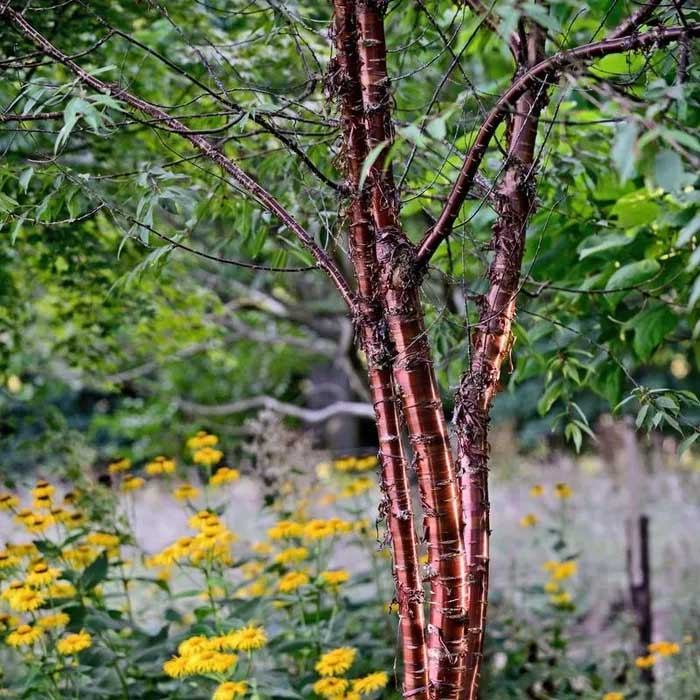 Native to the mountainous regions of western China, primarily Tibet, Tibetan cherry (Prunus serrula) is renowned for an interesting biological feature. (Image: The Times).
Native to the mountainous regions of western China, primarily Tibet, Tibetan cherry (Prunus serrula) is renowned for an interesting biological feature. (Image: The Times).
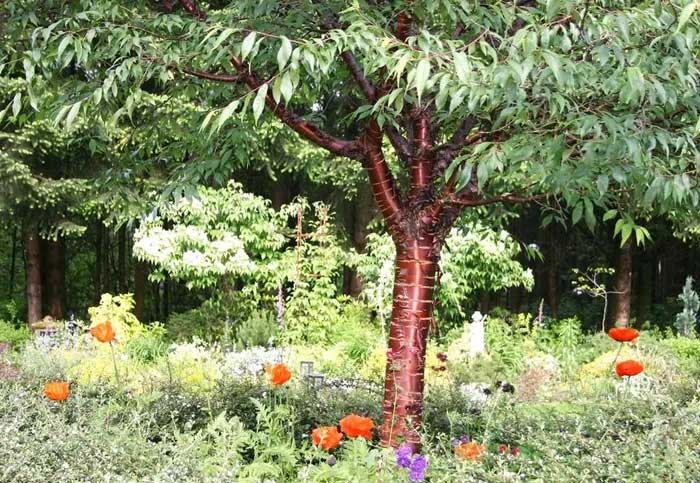
This is a small to medium-sized deciduous tree, reaching heights of 6–9 meters when fully mature. (Image: The Columbian).
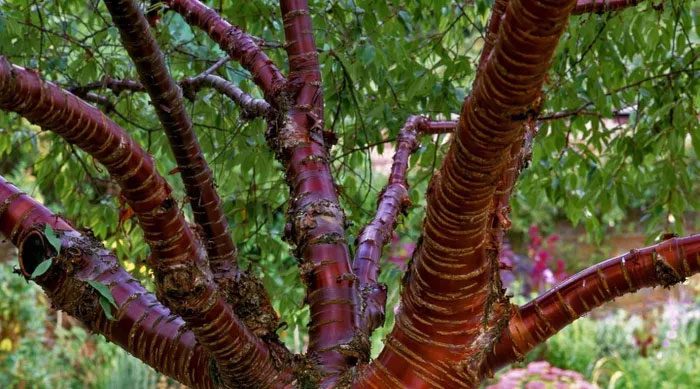
The bark is bright red and metallic, giving the entire trunk a bronze-like appearance. The trunk and branches are adorned with numerous rough horizontal stripes. (Image: Epic Gardening).
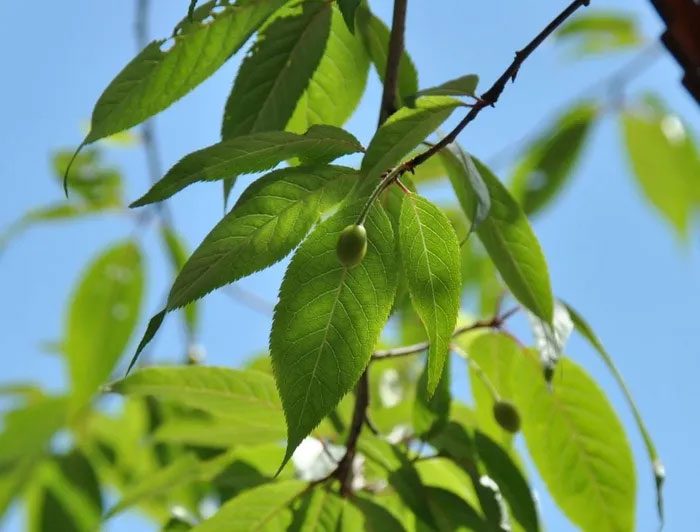
The leaves of Tibetan cherry are alternate, measuring 5–10 cm long and 1.5–2.0 cm wide, with serrated edges. (Image: Van den Berk Nurseries).
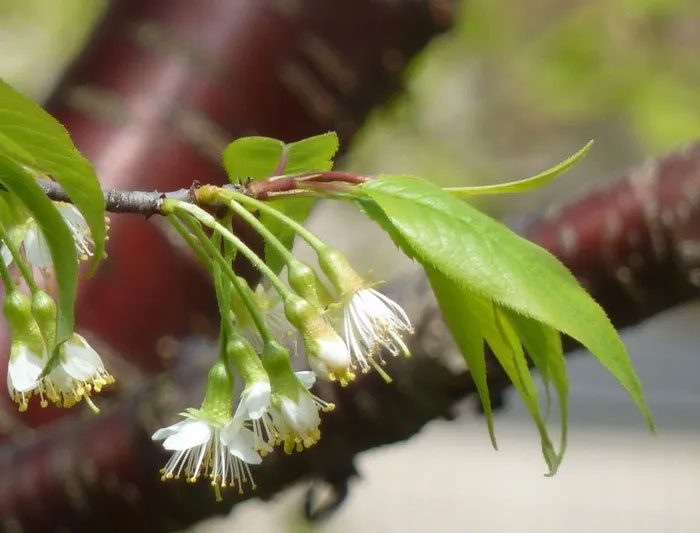
The flowers are white, blooming in clusters of one to three, at the end of April. (Image: Vancouver Cherry Blossom Festival).
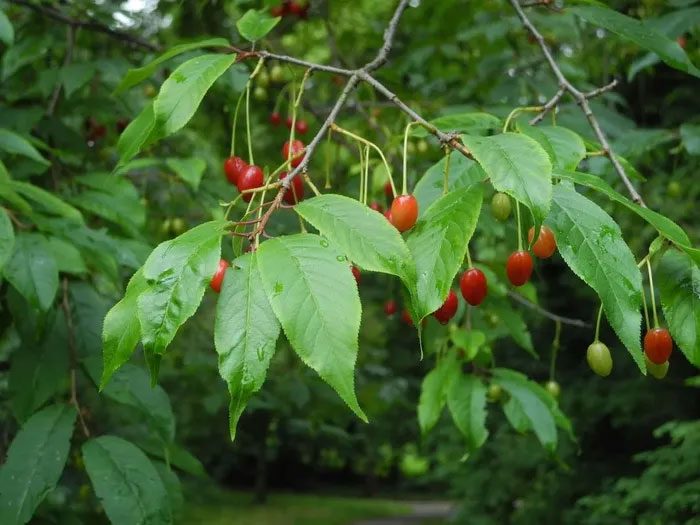
The fruit is a small, oval, bright red drupe. (Image: Sequoiatrees.com).
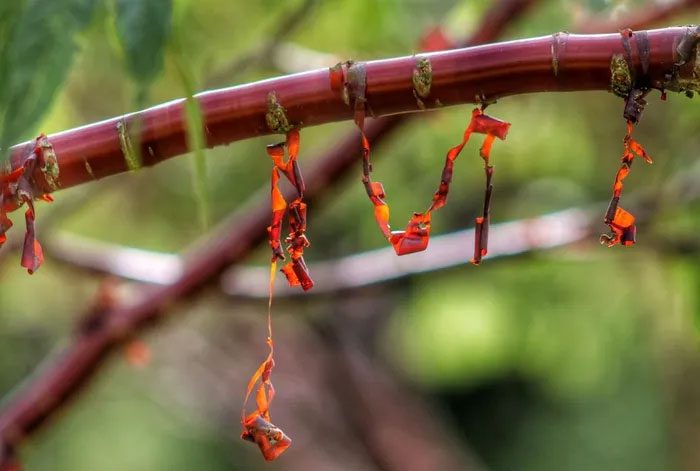
The bark is thin as paper and often peels around the trunk and branches of the Tibetan cherry. This bark is very strong, with durability comparable to mylar—a type of high-strength polyester film. (Image: Hillier Trees).
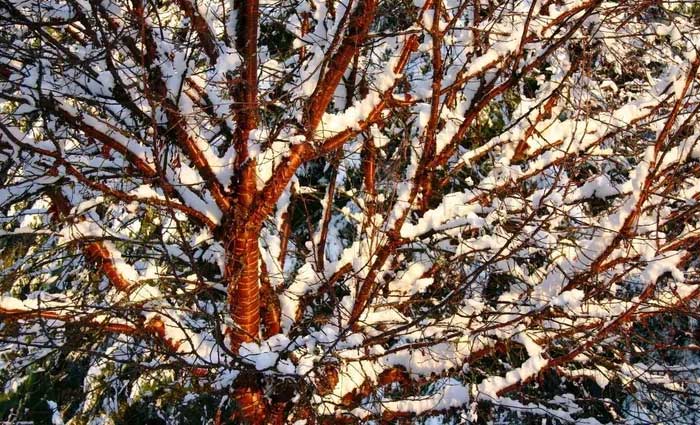
Ecologically, Tibetan cherry is a sun-loving tree, capable of thriving in various soil types and withstands cold climates. (Image: Sue Taylor / Flickr).
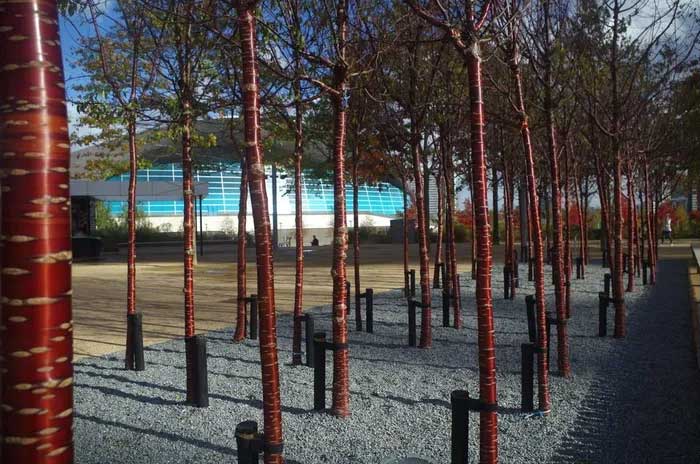
Sometimes branches of Japanese cherry (Prunus serrulata) are grafted onto the Tibetan cherry trunk, creating a tree with red bark and vibrant flowers. (Image: The Columbian).
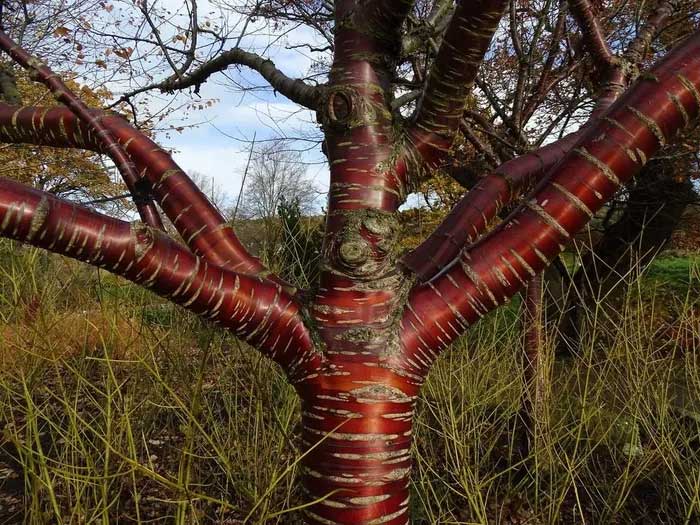
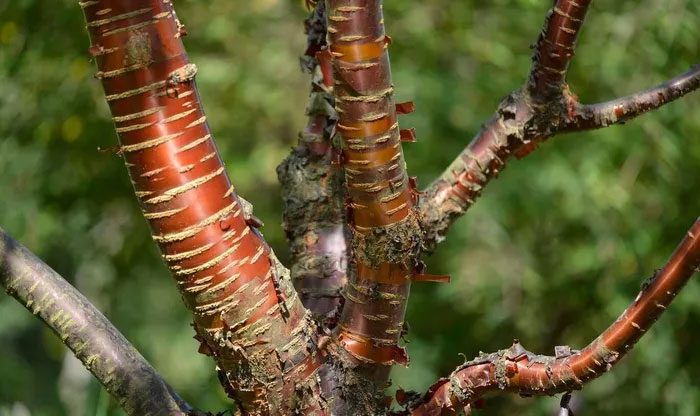
According to horticulturists, Tibetan cherry requires meticulous care as the tree is susceptible to common diseases and pest attacks when planted outside its natural distribution area. (Image: Mein schöner Garten).


















































